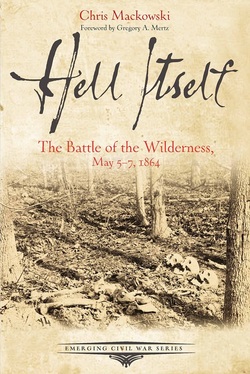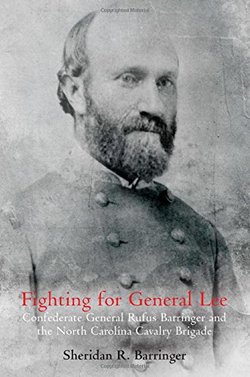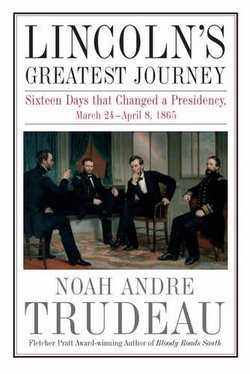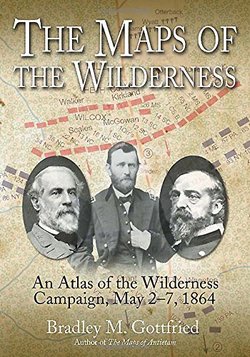
Chris Mackowski
Savas Beatie, 2016, 192 pp., $14.95
ISBN: 978-1-61121-315-7
Image courtesy of amazon.com
The Battle of the Wilderness has been getting some serious attention recently, so I was happy to see that Chris Mackowski wrote a book from the Emerging Civil War Series about it. Hell Itself encompasses May 5 -7 and does what most other books from this series has done. They give an excellent overview of the battle with great information, along with readable maps and clear driving instructions around the battlefield. This series has been invaluable and Hell Itself is no exception. Mackowski brings the same academic outlook to the battle which he has done in his previous works and all other works in the Emerging Civil War series.
Chris Mackowski is the editor-in-chief of Emerging Civil War along with being the writing profession in the School of Journalism and Mass Communication at Saint Bonaventure University. He is a former historian with the Fredericksburg and Spotsylvania National Military Park, which includes the Wilderness battlefield, and is the historian-in-residence at Stevenson Ridge. He is the author and co-author of twelve Civil War books from both the Emerging Civil War series and others including: Seizing Destiny, and Chancellorsville’s Forgotten Front. Also in Hell Itself are appendices written by other contributing authors of Emerging Civil War.
Hell Itself works on two fronts, as all other Emerging Civil War books have done. Not only is it informative, but it also offers a driving schedule for those who want to tour the battlefield. The strength of this series is that tourists can take them along when they go to these places. Each page is accompanied by either a picture of the battlefield or a picture from the war which gives readers a more visual idea of what happened here. Also, the maps given throughout are excellently drawn and quite simple to understand. This book is the perfect aide to anyone visiting the battlefield who have not been fore. The narrative of the battle is the excellence which Mackowski brings to all of his works and I found the Quandary at Saunders Field most interesting. It seemed that there, over all other places for me, the battle came alive. There was so much going on, so much confusion being thrown around the field that it just jumped out of the page. The appendices in the back were also quite informative covering such subjects as cavalry, analysis on Ambrose Burnside, and even the wounding of James Longstreet. Overall, the book is quite informative and a great aide to the battle.
I highly recommend this book for anyone interested in visiting the Wilderness Battlefield, and anyone interested in the Wilderness Campaign. There are many who have told me that the Wilderness is quite confusing when you begin to analyze it. I believe this is a great introductory book to that battle and moreover, a springboard for more people to learn about the campaign. The driving instructions are once again, second to none, and Mackowski has done a masterful job of making the battle come alive. Highly Recommended.



 RSS Feed
RSS Feed
